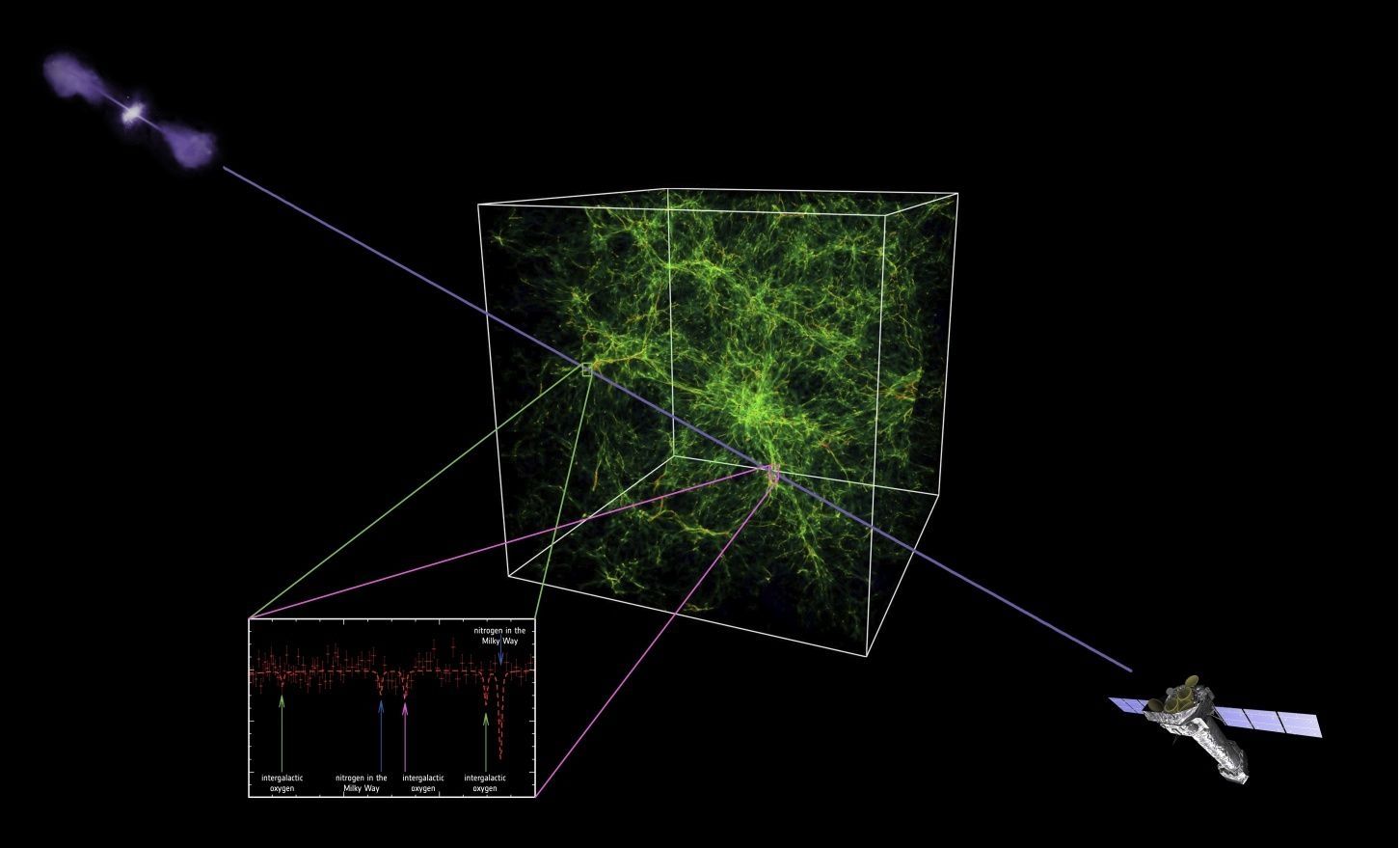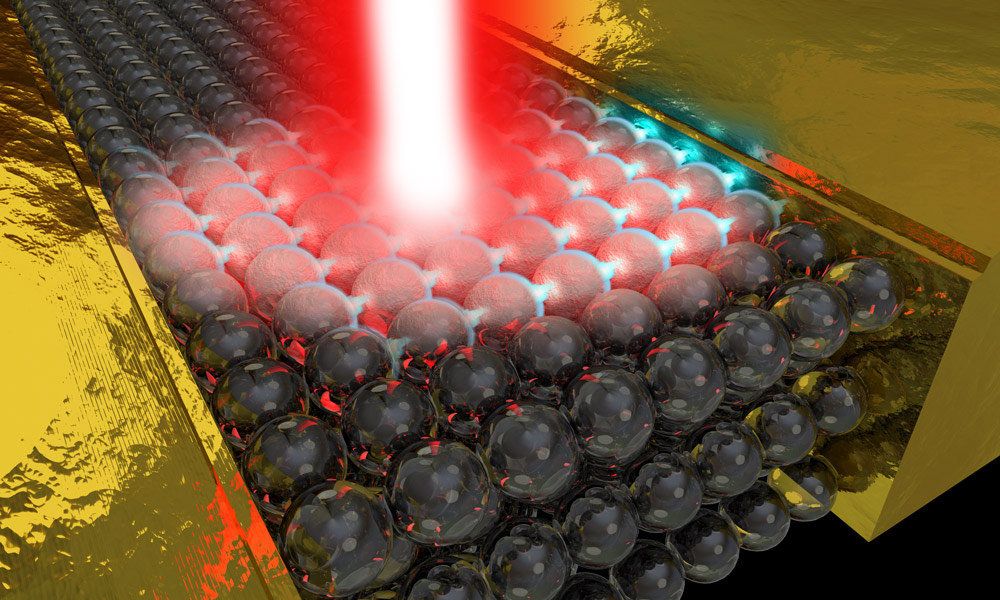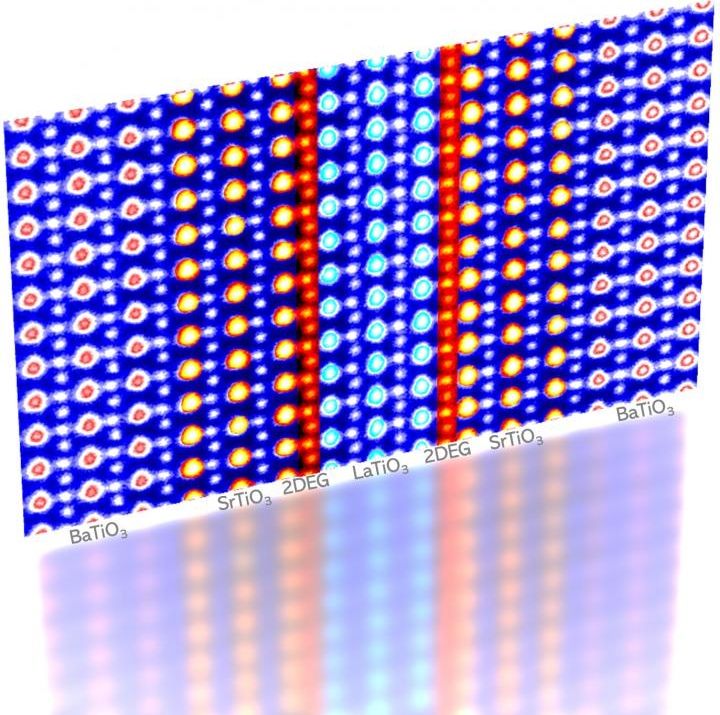Tokamak Energy of the UK has built the ST40 prototype fusion reactor and they aim to reach 100 million degrees celsius by the end of 2018. They have already reached 15 million degrees.




Aside from dark matter and the dark energy that comprised the universe, there remained to be 5 percent of what was called the “ordinary matter.” About two-thirds of this ordinary matter was left unaccounted for until now. ( Harvard-Smithsonian Center for Astrophysics )
After a 20-year-long experiment, a team of international scientists detects the last of the missing intergalactic material predicted to be created by the Big Bang.
Specifically, the team was finally able to detect the missing parts of the “ordinary matter” that makes up everything in the universe, from the stars to the cores of black holes. This ordinary matter is different from the “dark matter” that comprised the bulk of the universe’s mass. The dark matter remained to be undetected until now.

Infrared cameras are the heat-sensing eyes that help drones find their targets, even in the dead of night or through heavy fog.
Hiding from such detectors could become much easier, thanks to a new cloaking material that renders objects—and people—practically invisible.
“What we have shown is an ultrathin stealth ‘sheet.’ Right now, what people have is much heavier metal armor or thermal blankets,” says Hongrui Jiang, the Lynn H. Matthias Professor and Vilas Distinguished Achievement Professor of electrical and computer engineering at the University of Wisconsin-Madison.

Take a glass thread a thousand times thinner than a human hair. Use it as a wire between two metals. Hit it with a laser pulse that lasts a millionth of a billionth of a second.
Remarkable things happen.
The glass-like material is transformed ever so briefly into something akin to a metal. And the laser generates a burst of electrical current across this tiny electrical circuit. It does so far faster than any traditional way of producing electricity and in the absence of an applied voltage. Further, the direction and magnitude of the current can be controlled simply by varying the shape of the laser—by changing its phase.

For the first time, astronomers have directly imaged the formation and expansion of a fast-moving jet of material ejected when the powerful gravity of a supermassive black hole ripped apart a star that wandered too close to the massive monster.
The scientists tracked the event with radio and infrared telescopes, including the National Science Foundation’s Very Long Baseline Array (VLBA) and NASA’s Spitzer Space Telescope, in a pair of colliding galaxies called Arp 299. The galaxies are nearly 150 million light-years from Earth. At the core of one of the galaxies, a black hole 20 million times more massive than the Sun shredded a star more than twice the Sun’s mass, setting off a chain of events that revealed important details of the violent encounter. The researchers also used observations of Arp 299 made by NASA’s Hubble space telescope prior to and after the appearance of the eruption.
Only a small number of such stellar deaths, called tidal disruption events, or TDEs, have been detected. Theorists have suggested that material pulled from the doomed star forms a rotating disk around the black hole, emitting intense X-rays and visible light, and also launches jets of material outward from the poles of the disk at nearly the speed of light.

Water samples from UK rivers contained significantly higher concentrations of microplastics downstream from wastewater treatment plants, according to one of the first studies to determine potential sources of microplastics pollution.
Scientists from the University of Leeds measured microplastics concentrations up and downstream of six wastewater treatment plants and found that all of the plants were linked to an increase in microplastics in the rivers—on average up to three times higher but in one instance by a factor of 69.
Lead author Dr. Paul Kay, from the School of Geography at Leeds, said: Microplastics are one of the least studied groups of contaminants in river systems. These tiny plastic fragments and flakes may prove to be one of the biggest challenges in repairing the widespread environmental harm plastics have caused. Finding key entry points of microplastics, such as wastewater treatment plants, can provide focus points to combating their distribution.

“Society is vulnerable, so we need to prepare ourselves as individuals,” said Dan Eliasson of the Swedish civil contingencies agency, which is in charge of the project. “There’s also an information deficit in terms of concrete advice, which we aim to provide.”
Defence pamphlet shows how population can prepare in event of attack and contribute to country’s ‘total defence’
Jon Henley European affairs correspondent.

In 1965, a renowned Princeton University physicist theorized that ferroelectric metals could conduct electricity despite not existing in nature.
For decades, scientists thought it would be impossible to prove the theory by Philip W. Anderson, who shared the 1977 Nobel Prize in physics. It was like trying to blend fire and water, but a Rutgers-led international team of scientists has verified the theory and their findings are published online in Nature Communications.
“It’s exciting,” said Jak Chakhalian, a team leader of the study and Professor Claud Lovelace Endowed Chair in Experimental Physics at Rutgers University-New Brunswick. “We created a new class of two-dimensional artificial materials with ferroelectric-like properties at room temperature that don’t exist in nature yet can conduct electricity. It’s an important link between a theory and an experiment.”

Are we ready?
Batteries powered by radioactive materials have been around for more than a century, but what they promise in power they usually lose in bulk.
Not so with a new kind of power source, which combines a novel structure with a nickel isotope to pack ten times more power than an electrochemical cell of the same size. The only question is, are we ready to go nuclear?
A team of Russian researchers have put a new spin on technology that uses the beta decay of a radioactive element to create differences in voltage.